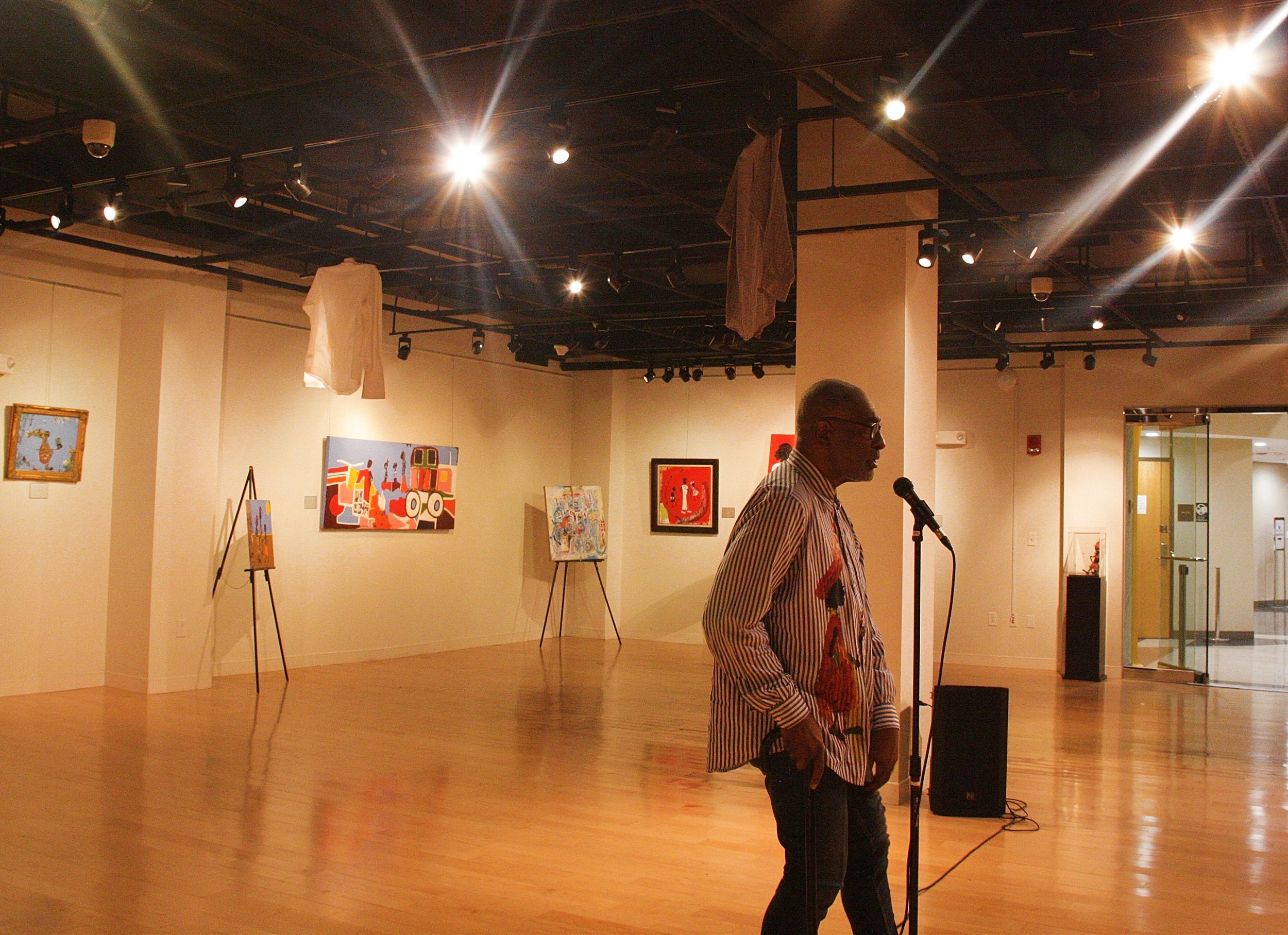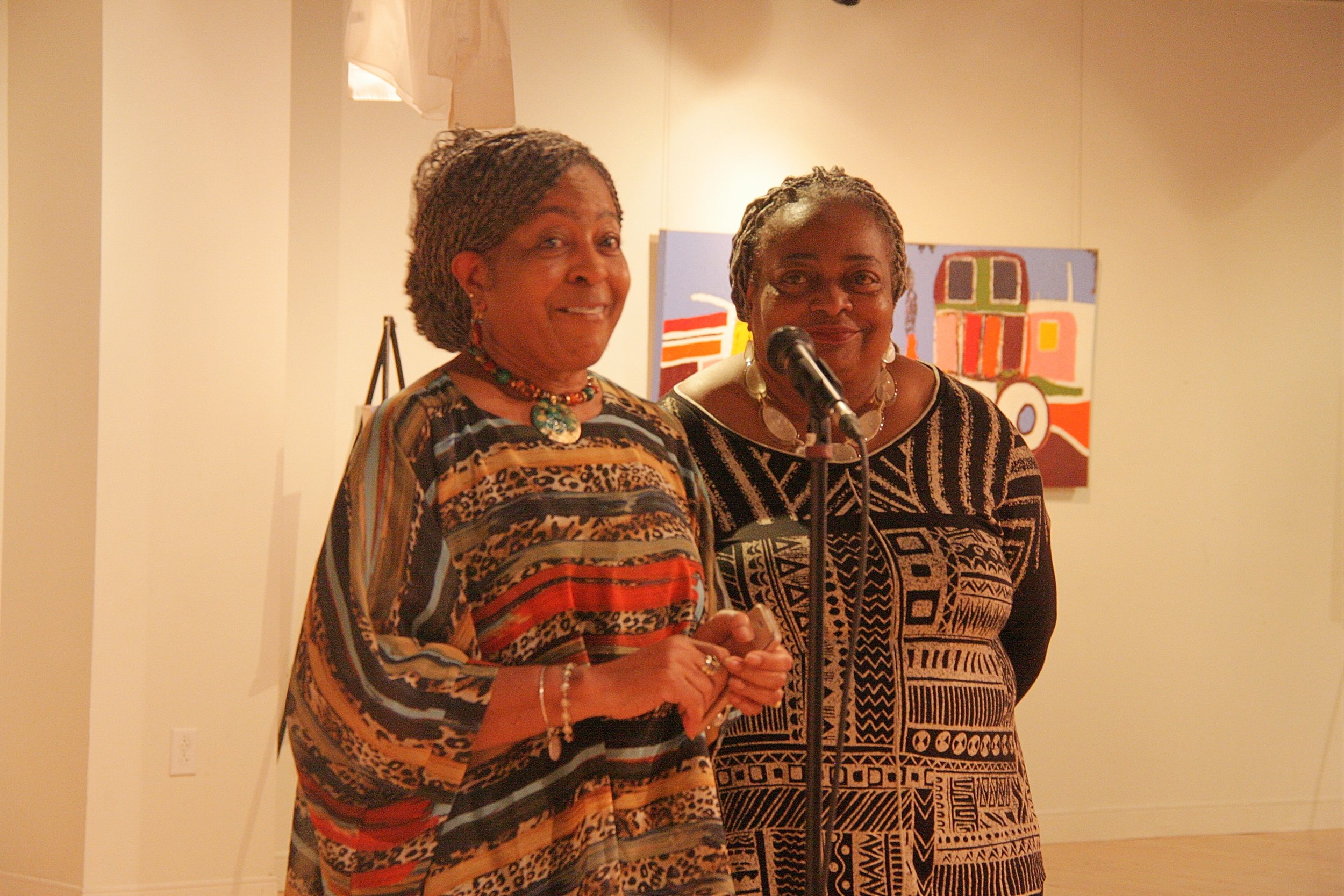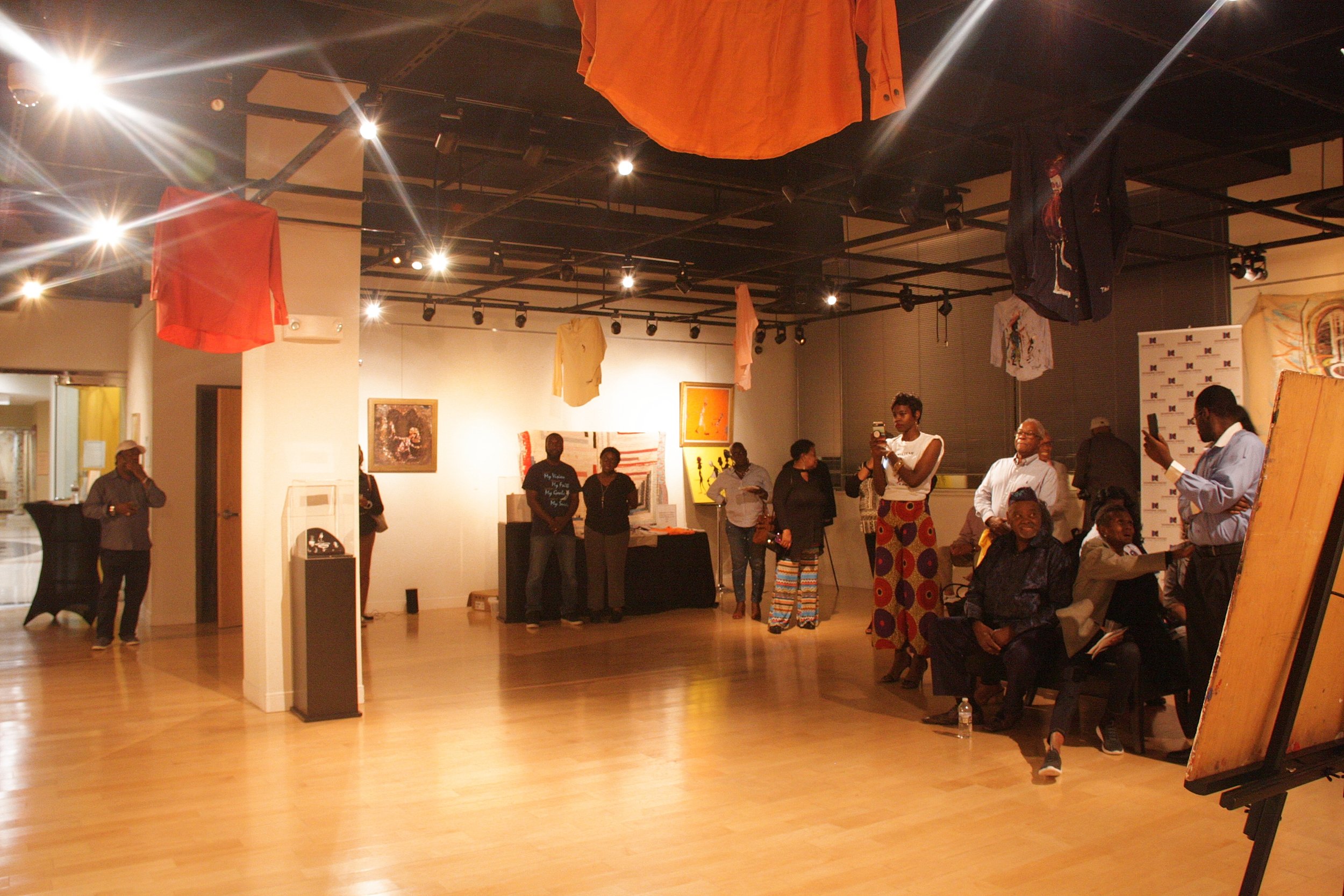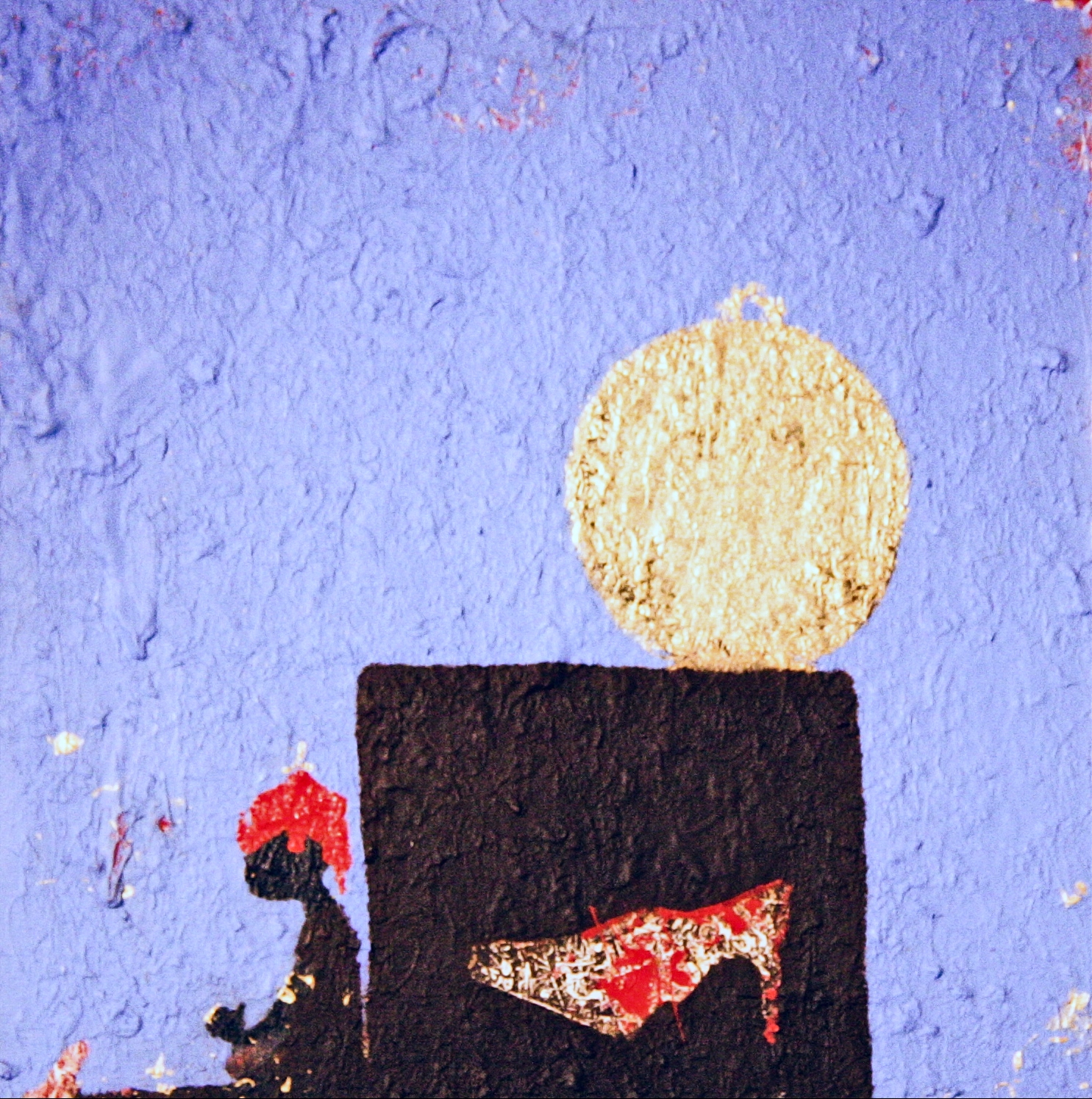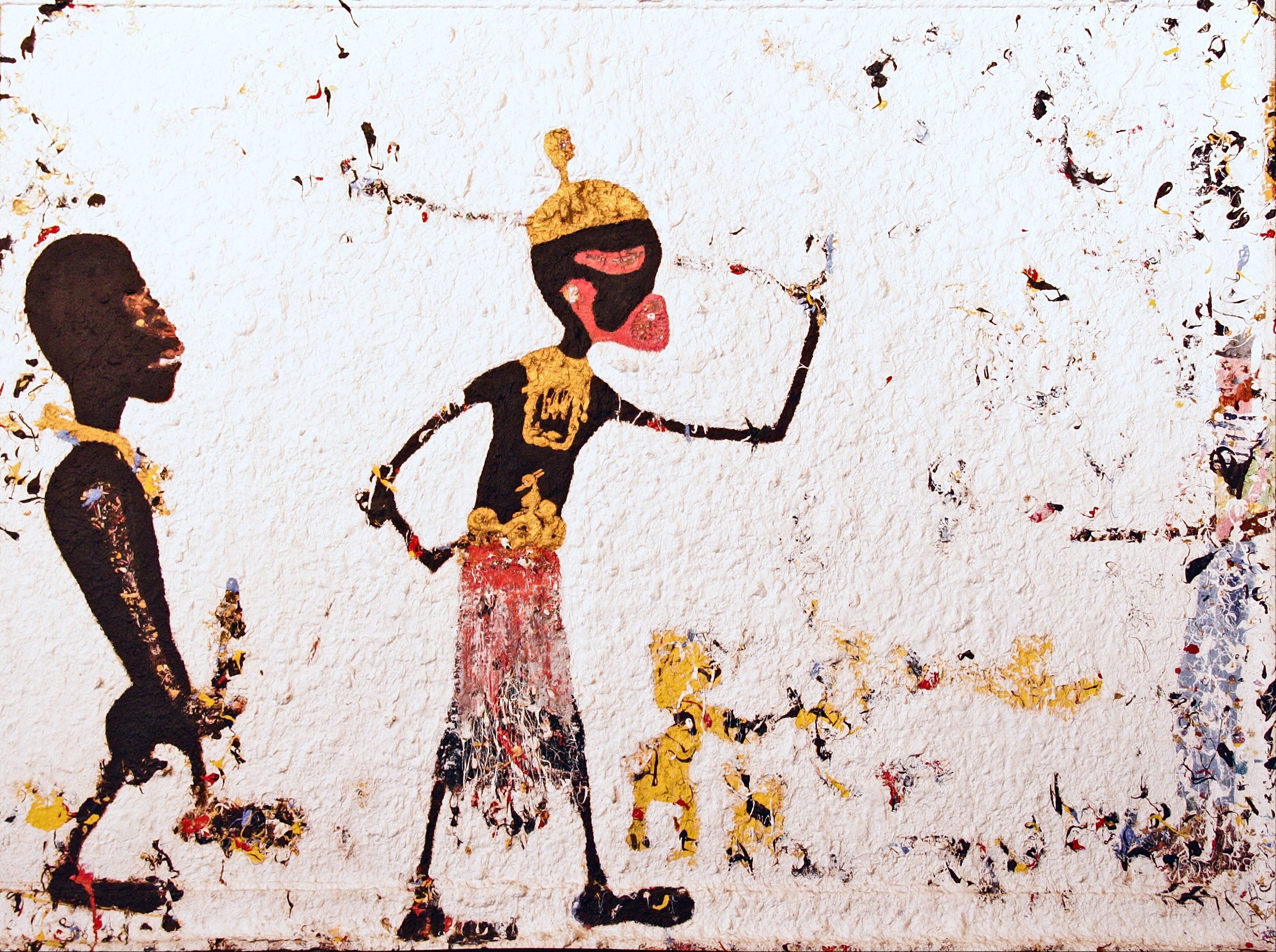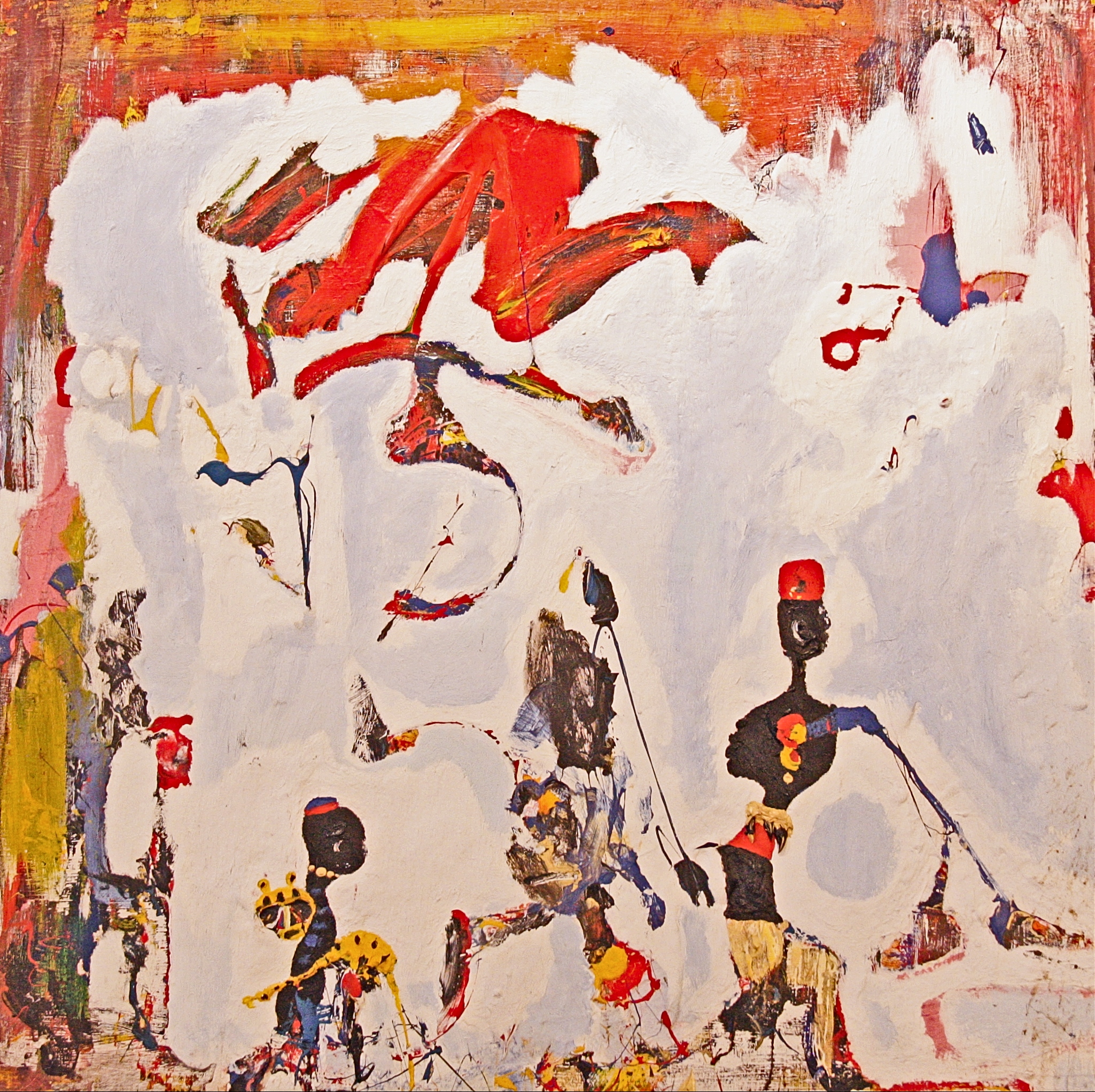About the Exhibit
Gazing upon the hanging tarp and exposed beams of the newly opened Downing-Gross Cultural Arts Center, artist Thomas Heath reflected on the memories of his childhood and his grandmother. Beulah Fox was the only African-American employee at the all-white Walter Reed school, located on the corner of 24th and Wickham. Heath and his siblings, Linda Craig and Audrey Bolden, often helped Fox clean the very school that they would not be allowed to attend.
Fifty years after the passing of their grandmother and ten years after the official opening of the Downing-Gross Cultural Arts Center, Fox’s descendants returned to curate a story of “beutiful” irony. This is the story of a woman who “laughed when she talked, was extremely empathetic, religious [member of Zion Baptist Church under Reverend Day], and family-oriented.” It is the recompense gained from her grandson displaying his art in the very building that once shunned him from attending. The legacy of Beulah Fox is a reflection of the transformation of this space and this exhibit brings this inspiring tale to life.
The exhibit was composed of the artwork of New York-based artist, Thomas Heath of the Heath Gallery and personal artifacts of the life of Beulah Fox from the Heath family. The powerful narrative and historical relevance of this exhibit made it unforgettable. The reception was held on October 5, 2018, and featured the chance to meet Thomas Heath and family as they shared their story and art with the community.
About the Artist
Thomas Edwin Heath was born in Newport News, Virginia where he attended elementary and high schools (John Marshall and Huntington respectively). He is the oldest of four children born to Mary Elizabeth Fox and James Edwin Heath. Heath’s earliest exposure to art was through family coloring contests at his grandmother’s (Beulah Fox) large dining room table. Heath could often be found daydreaming and doodling there during his formative years. Little did he know at that time, his doodles would lead to an art career.
Heath moved to New York City when he was 17 years old and did not formally begin painting until he was 40 years of age. He had married, started a family and was working in security when a chance meeting with artist Mark Morse led to a close friendship and Heath beginning to paint. Morse was the first person to look at Heath’s doodles and to declare that Heath was an artist. He encouraged Heath to pick up a paint brush and with Morse’s encouragement, Heath did just that. He purchased a 10-foot canvas, assorted paints and a paintbrush and began painting. He painted large canvasses and often hung those paintings outside the window of the townhouse he owned so that passersby on their way to work could see and enjoy Heath’s own daily art show. He zealously painted everything in his sight, almost as though he was catching up for lost time. He painted clothing, furniture (including his own living room sofa) and musical instruments to free his creative identity.
Heath took advantage of every opportunity to share his works of art in many forms with his beloved Harlem community. He joined open house tours, participated in open studio visits, became a destination on local Harlem tours and for years Heath could be found showcasing his painted clothing on the infamous 125th Street. His first group show was in 1995 at Aaron Davis Hall. Heath continues to share his work inside and outside of the Harlem townhouse he now owns.
Over the years Heath has been greatly encouraged by the response to his work from every day people, high profile collectors and by being photographed by the New York Times fashion photographer, Bill Cunningham, on multiple occasions and in seeing a photograph of his painted clothing in a Newsweek magazine article.
Heath primarily works in acrylic on wood, paper and canvas. He continues to doodle. His subject matter consistently explores the impact of the African slave trade on people of the African Diaspora, including the untold stories of the many whose lives were lost at sea.
“I work intuitively. The shapes and images that are revealed to me as I work are fascinating to me. What most often appears are shapes and images that to me seem to express experiences of people of the African Diaspora. I feel “chosen” to relay these images and their messages and see this as spiritual work. I believe the shapes, textures and color in my work are given to me directly from my ancestors. I am humbled that they would choose me to tell the stories not often told or known.”
Heath has exhibited in both group and solo shows in New York City and the surrounding areas. He’s been published in African American Art: The Long Struggle, edited by Crystal Britton. His work is found in private collections around the world.







